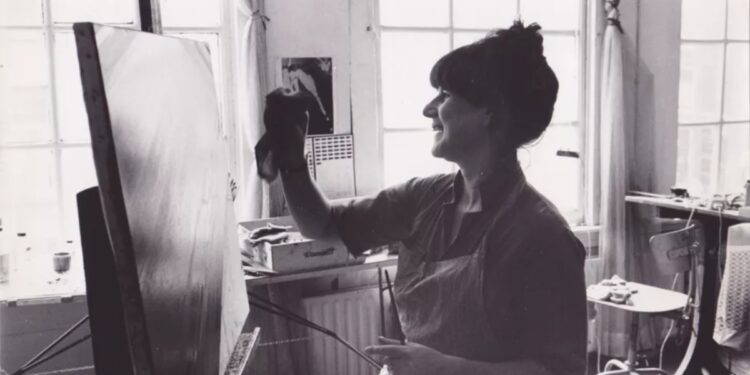On June 29th, at the age of 85, Dutch artist Jacqueline de Jong passed away. She was well-known for her contributions to avant-garde figuration and for her involvement in the radical Situationist International movement.
Her galleries in Paris, Galerie Allen, and New York, Ortuzar Projects, both confirmed her death and stated that she passed away surrounded by family following a brief illness.
Brief Biography
De Jong was born in 1939 into a Jewish household in Hengelo, Holland. The horror of World War II affected his upbringing. The German invasion of the Netherlands drove her family into hiding.
Her family was rescued by the French resistance when they were able to escape the German soldiers. She would later move back to the Netherlands with her family during the war, and in 1957 she moved to Paris to work at a Christian Dior boutique.
In the late 1950s, she relocated to London, where she attended the Guildhall School of Music and Drama for a short time before going back to Amsterdam to work at the Stedelijk Museum. She soon after met Asger Jorn, a Danish painter and co-founder of the CoBrA movement, in 1959. Jorn went on to become her long-term romantic companion and a significant creative influence.
De Jong became a member of the Situationist International movement by 1960, which was an artistic and literary collective that aimed to challenge the established social order. She would support its revolutionary goals up to her removal two years later because of internal strife.
She did, however, start the socialist journal Situationist International in protest. She continued to be involved in a number of socialist activities during the 1960s, most notably the May 1968 protests in Paris.
The emphasis on organic and expressive forms in the CoBrA movement was clearly reflected in De Jong’s approach. Her paintings changed throughout the years from narrative figuration to more abstract multi-part pieces. Her paintings frequently test conventional formats by experimenting with unusual materials and techniques.
Her subjects range from French pulp fiction to sexuality to contemporary socio-political issues. Her figurative works, which are frequently funny, are full of incisive social, feminist, and anti-war criticisms. The artist’s ability to balance amusing and violent subjects is possibly best demonstrated by her two parallel series, “Accidental Paintings” and “Suicidal Paintings.”
In the Netherlands and throughout Europe, de Jong was almost unknown for the majority of her life. Later in her career, nevertheless, she started to gain recognition on a global scale, especially during her 2018 retrospective at Toulouse, France’s Les Abattoirs museum and her 2019 survey at the Stedelijk Museum.
She started having exhibitions in prestigious galleries at this time, such as Rodolphe Janssen in Brussels, Pippy Houldsworth in London, and Chateau Shatto in Los Angeles. In 2021, she had another institutional solo tour that travelled and debuted in Brussels’ WIELS Contemporary Art Centre. S
he has previously had solo exhibitions at Pippy Houldsworth Gallery, Galerie Lelong & Co., and Ortuzar Projects in 2024. In November 2024, her artwork will be on display at the NSU Art Museum in Fort Lauderdale, Florida.











